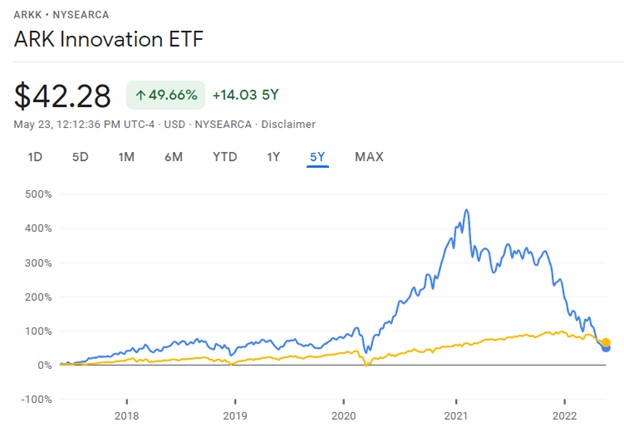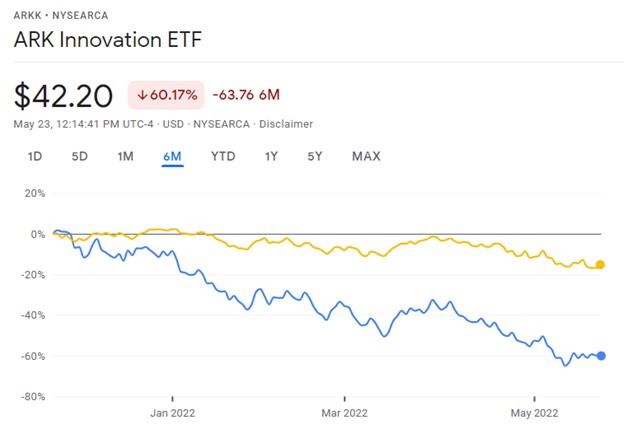It was the best of times, it was the worst of times. This is what the past several years have felt like. Markets reached the Covid bottom on March 23, 2020. For two straight years we experienced nothing but market bliss while simultaneously having daily life turned upside down. Today, it feels as though stocks and bonds have nowhere to go but further down.
At the start of 2022, some markets were at an all time high. That was a very short time ago. Let’s stop to think about what that means. It means that markets have recovered from every single negative US and world event in history. I can list, and I am sure you can too, many historical events that were far worse than the Federal Reserve raising interest rates to fight inflation.
To start this year, a reality check has reminded us what risk looks like on the way down. Speculative (or risky) assets have become extremely popular over the last two years, which is typical in extremely bullish periods. Unprofitable companies, Non Fungible Tokens (NFTs), SPACs, and speculative money managers were all soaring. However, investing money into companies or ideas that only have a nice story can produce devastating results. One example is the investment ETF (exchange traded fund) ARKK. It has reached notoriety across financial media and gained substantial popularity. According to its prospectus, it invests in companies with an investment theme of “disruptive innovation.” The fund performed unbelievably through the pandemic…until it didn’t. Here is a look at the fund over the past five years relative to the S&P500. It is an example of what high risk looks like and has given up all outperformance to the S&P 500 over a five-year period.

Here is what the comparison looks like if you happened to jump on the bandwagon too late, after the investment soared. It is down 60% in the last six months as of May 23, 2022.

As advisers, we continuously discuss our investment strategies with clients to understand how we are invested, and work to align those strategies with financial goals. We believe businesses with quality cashflows and earnings, and bonds with interest payments backed by strong credit ratings create a high likelihood of long-term success.
As markets reach fresh lows and volatility remains high, take a step back to revisit your long-term plan with your advisor. Understand that asset drawdowns are a normal part of a long-term successful course. The Warren Buffet wisdom of being greedy while others are fearful is easier said than done, because fear rises during uncertainty and troubling time periods. As we work through this challenging time, never hesitate to reach out to your advisor, as we are here to serve the clients of SBC.
The information provided in this post is being provided for educational and informational purposes only and should not be considered an individualized recommendation or personalized investment advice. Those seeking information regarding their individual financial needs should consult a financial professional. Opinions expressed are current as of the day of posting but are subject to change without notice based upon changing market, economic, political, or social conditions. All information is from sources deemed to be reliable, but no warranty is made as to its accuracy or completeness. SBC, our employees, or our clients, may or may not be invested in any individual securities or market segments discussed in this material. Past performance is no guarantee of future results and any opinions presented can not be viewed as an indicator of future performance. Investing involves risk, including loss of principal.





